Are you wondering whether or not you can bring knives through TSA security and on to a plane?
The answer isn’t so clear to a lot of people due to past policies that were implemented and then later reversed.
But in this article, I’ll tell you everything you need to know about bringing knives through airport security and on board your plane.
I’ll cover the TSA rules for both carry-ons and checked baggage and also talk about some other sharp objects.
Table of Contents
Can you bring knives on a plane?
According to TSA, you cannot bring any knives in your carry-on or personal item, except for “plastic or round-bladed butter knives.” However, TSA allows you to transport various knives in your checked baggage, though you need to take steps to make sure the knives are sheathed or securely wrapped.
Also, keep in mind that many states and countries outlaw certain types of knives so traveling with them could still be illegal.
For example, some states impose restrictions based on blade length, with limits typically ranging from 3 to 4 inches. Additionally, certain states may have regulations concerning the carry of knives, specifying whether they can be open or concealed.
So you need to factor in TSA rules, agent safety, and local laws when traveling with knives. Below, you can find some links to various legal resources to get more information about laws pertaining to knives.
Keep reading below for more details on the TSA rules for knives.
Tip: Use the free app WalletFlo to help you travel the world for free by finding the best travel credit cards and promotions!
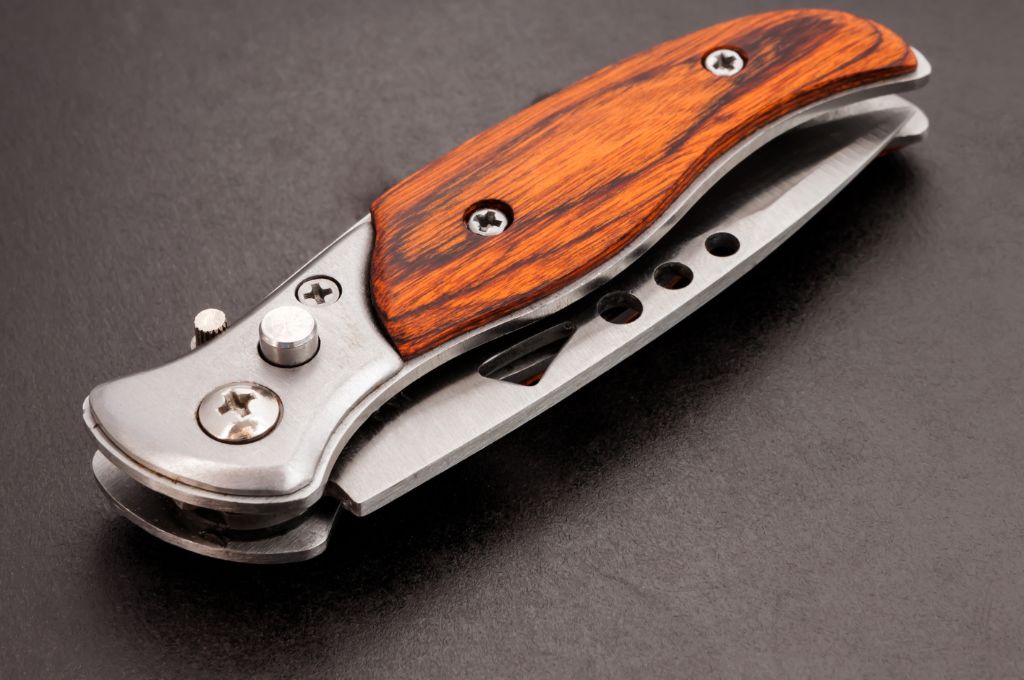
The 2013 “changes” on knives
You might be a little bit confused about the ban on small knives since at one point it looked like TSA was going to allow those knives on board. In 2013, TSA decided to allow small pocket knives to be brought aboard aircraft.
There were certain size regulations, such as requiring the blades to be no longer than 2.36 inches long and no wider than 1/2 inch. The knives also could not have certain features such as a molded grip or a locked or fixed blade.
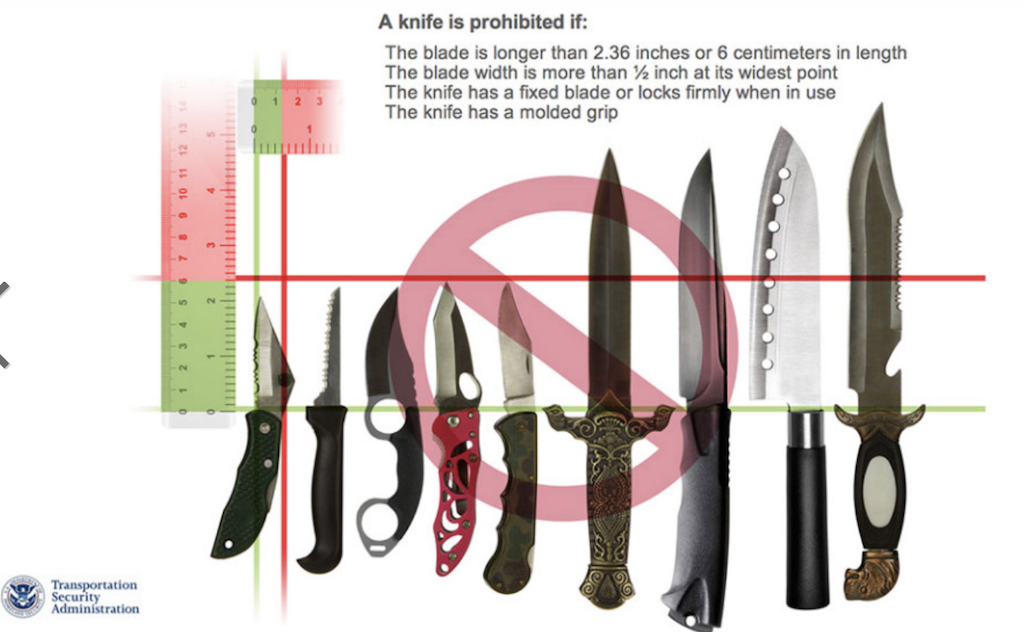
Why on Earth would they think this was a good idea?
Well, according to the TSA they believed that doing so would allow the airport screeners extra time so that they could focus on finding more dangerous objects like bombs, IEDs, etc. They also stated that due to reinforced cockpit doors, small knives were not a major threat to hijackings.
But after TSA announced this, there was major pushback from the airlines, unions, and government officials. Many flight attendants didn’t feel safe knowing that passengers could be equipped with knives (even if they were very small knives).
Three days before the new changes were to go into effect, TSA decided to do more consulting regarding the changes and they eventually scrapped the changes altogether.
So to this day even small knives such as pocket knives are not allowed on a plane. And unfortunately, many people do not get that memo so pocket knives remain one of the most confiscated items by TSA.
- You might also be interested in reading about bringing firearms through security.
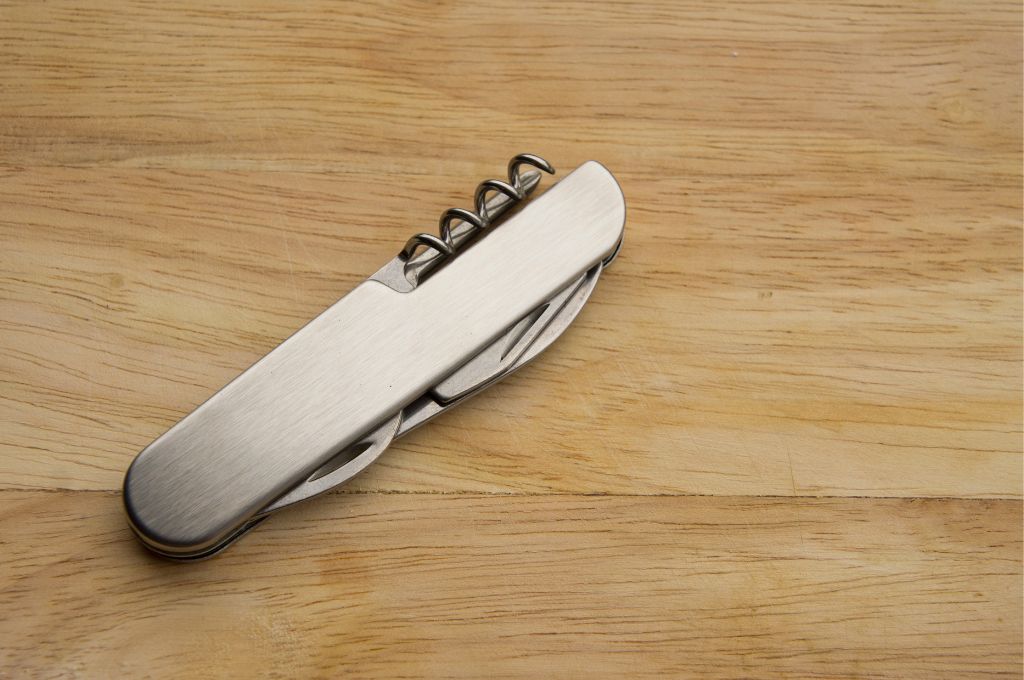
Bringing knives in your carry-on
Knives in your carry-on are never allowed, except for “plastic or round-bladed butter knives.”
Round-bladed means that they are not serrated, as some butter knives do have grooves and ridges along the blade.
Besides these exceptions, there are no “TSA Approved” knives that you can bring on to a plane in your carry-on. This would include lightweight knives, non-locking knives, and compact knives.
Remember that in general, you are prohibited from traveling with any sharp objects in your carry-on baggage
The penalties for bringing a knife in your carry-on can be quite stiff.
For example, according to TSA, you could get hit with up to a $2,050 fine if you’re caught with some knives in your carry-on since they could fall in the banned category below:
Axes and hatchets; bows and/or arrows; ice axes and ice picks; knives with blades that open automatically (such as switchblades); knives with blades that open via gravity (such as butterfly knives); any double-edge knives or daggers; meat cleavers; sabers; swords; machetes; throwing stars
There are countless stories out there of TSA confiscating knives and other sharp objects so they will not hesitate to take these items if they are discovered in the x-ray machine.
If you want to find out more about how TSA fines passengers when they bring dangerous items through security be sure to read our complete guide here.
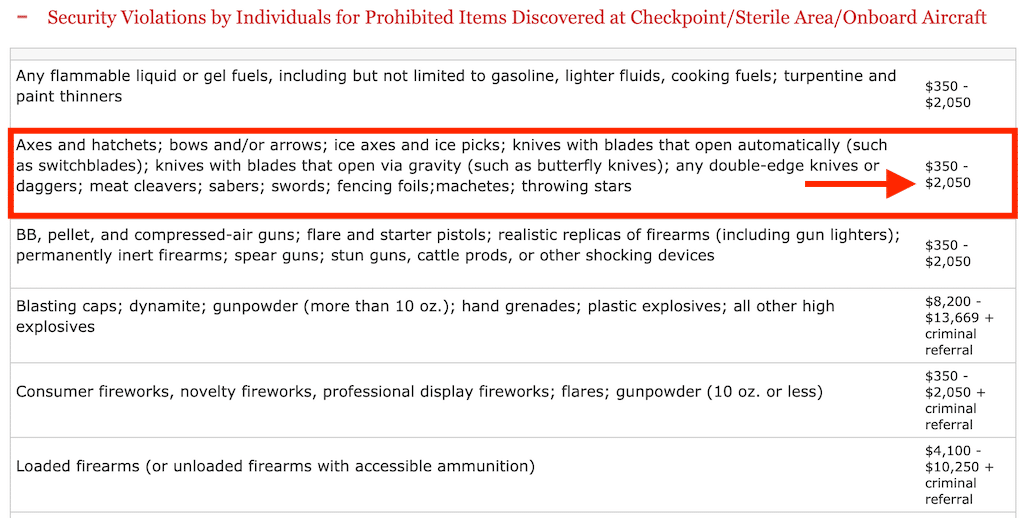
One more thing to consider about going through security checkpoints with your knives.
“TSA officers have the discretion to prohibit any item through the screening checkpoint if they believe it poses a security threat.”
This means that even if an item is not prohibited and is allowed, an agent could still see it as a threat and not allow it to go through.
We once were going to transport some real silver butter knives through TSA but decided otherwise because we recognized that a TSA officer could utilize discretion and confiscate them. For example, they could say the butter knife was not “rounded” enough.
That’s why I recommend you to store your sharp objects in your checked baggage if possible.
Bringing knives in checked baggage
You may pack just about any type of knife in your checked baggage. Indeed, this is how I’ve been able to transport souvenir knives from places like Alaska and Mexico.
So your checked luggage would be the way to bring the following knives:
- Bread knife
- Butcher knife
- Carving knife
- Pocket knives
- Hunter’s knives
- Kitchen (or chef) knives
- Paring knife
- Santoku knives
- Swiss Army Knife
- Swords and sabers
- Utility knife
But you still need to comply with the rules that relate to properly covering your knife.
TSA states that “[a]ny sharp objects in checked bags should be sheathed or securely wrapped to prevent injury to baggage handlers and inspectors.”
So you don’t want to have a knife sitting loosely in your checked baggage.
That’s because TSA may need to inspect your checked baggage and if you have an exposed knife sitting in your luggage they may not see it and could slice their hand open.
Instead of creating that hazard, ensure that your knife is packed in such a way so that it is securely covered or wrapped just in case an inspector were start digging through your belongings.
Consider using covering the knife with a sheath, blade cover, or wrap the knife in cloth or bubble wrap. Even better if you can place the knife inside of a hard-shell case, perhaps with a label on it so that an inspector would know there is a knife inside.
Another easy way to protect your knife is to simply wrap it in paper.
Check out the video below which can be really useful, especially for people trying to bring multiple knives in their checked baggage.

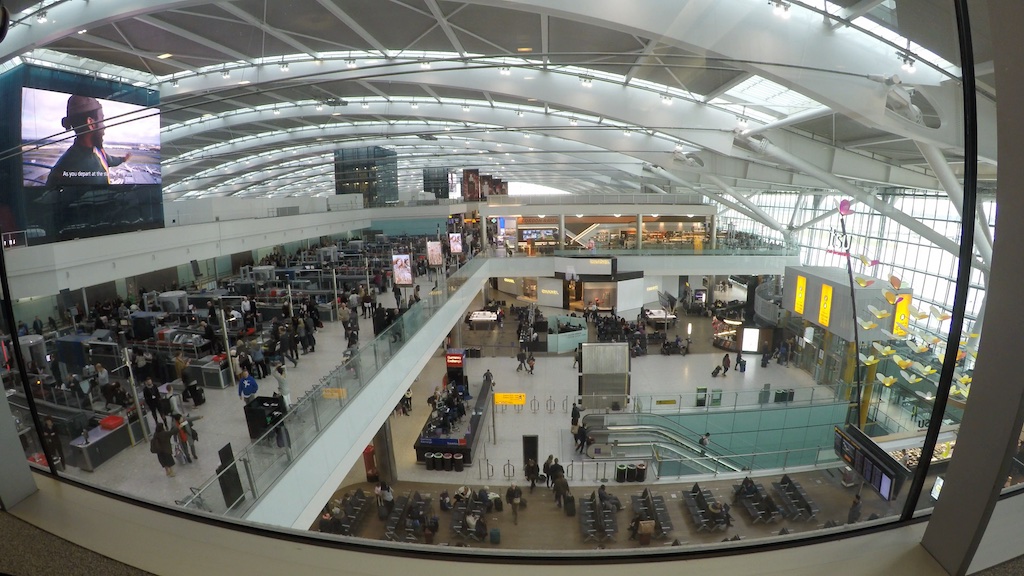
Tip: Use WalletFlo for all your credit card needs. It’s free and will help you optimize your rewards and savings!
What about other sharp items?
When in doubt about bringing a sharp item as a carry-on, just don’t bring it.
But if you’re trying to bring along common sharp items like scissors then make sure you’re in compliance with the TSA rules. For example, you can bring scissors but only if they are less than 4 inches from the “pivot point.”
Here’s a list of common sharp objects that you might want to bring.
Below is a breakdown on whether or not they are allowed as carry-on items.
Generally, you’ll notice that many small, common household items like safety pins and nail clippers are allowed. But items with serious potential to wound or cut someone like a sword are not allowed. For the most part, common sense will take you far.
- Box Cutters = No
- Cigar Cutters = Yes but not recommended
- Corkscrews (with blade) = No
- Crochet Hooks = Yes
- Darts = No
- Disposable Razor = Yes
- Ice Axes/Ice Picks = No
- Kirpans = No
- Knitting Needles = Yes
- Lock Picks = Yes
- Meat Cleavers = No
- Nail Clippers = Yes
- Pencil Sharpeners = Yes
- Razor-Type Blades = No
- Sabers = No
- Safety pin = Yes
- Safety Razor With Blades (allowed without blade) = No
- Saws = No
- Sewing Needles = Yes
- Swiss Army Knife = No
- Swords = No
- Throwing Stars = No
- Tweezers = Yes
Relate: Can You Bring Pepper Spray on a Plane?
An overview of knives and applicable state laws
As a former attorney, I’m always thinking about the law and you should too if you are traveling with knives.
You have to remember that just because something is permissible through TSA, that does not mean that it is legal where you are or where you are going.
TSA is not a law enforcement agency so they are not actively trying to find out if you are breaking the law. Instead, they are primarily concerned with safety and preventing terrorist attacks via explosives and other dangerous items.
With that said, if they did find something illegal such as a type of knife that is not allowed in your state, they could refer you to law-enforcement.
That’s why you need to make sure that your knives are not going to get you into trouble wherever you’re going.
While all of the information in this article does not constitute legal advice, I provide some guidance that will help you in your own research. If you have any specific questions, be sure to get advice from an attorney before you risk breaking the law.
Each state will have its own laws that will determine if it is legal for you to possess or carry a knife. So it will be your responsibility to look up the latest laws to wherever you were traveling to.
So with all of that out of the way, here are some common restrictions that you can look out for and a few examples to help you along the way.
Blade length
A lot of states impose restrictions based on the length of a knife blade.
Typically, the limit is around 3 inches to 4 inches but some states go higher or lower.
Sometimes these apply to fixed blade knives but other times they only apply to switchblades. Some states also don’t publish any specific length limitations.
Carry open or concealed
Just like firearms, there can be laws pertaining to carrying knives open or concealed. And often these laws are tied to special blade length restrictions.
For example, states like Georgia, North Dakota, and Texas may permit pocket knives to be concealed if the blades are shorter than 5 inches. Other states have limitations at 4 inches or 3 inches.
Switchblades or automatic knives
Switchblades or automatic knives are those knives that pop out in an instant with the push of a button or the flip of a lever.
States often publish specific descriptions of what constitutes a switchblade and they usually refer to language like “spring-loaded,” relying on a throwing motion, gravity, etc.
These are outlawed at least in some degree in certain states like: California, Delaware, Hawaii, Massachusetts, Minnesota, New Jersey, New Mexico, New York, North Carolina, North Dakota, Pennsylvania and others.
Single-edged or double-edged blades
Some states put special restrictions on knives that have double-edged blades. It’s not uncommon to see a ban on double sided daggers, for example.
Disguised knives
Some knives are made to be concealed by looking like other objects such as pens or lipstick. These type of knives may be outlawed in certain states.
Also, if you get caught bringing these through TSA they can hit you with a bigger fine because of the concealment.
Special use laws
When it comes to carrying knives, context really matters.
For example, if you are out in the wilderness and with a knife the purpose of your use is probably survival, defense from wild animals, etc.
If you are wielding a knife in a packed subway station, that’s a very different matter.
Related to this, certain establishments like schools or bars have strict laws about carrying knives.
International travel with knives
When going through airport security in other countries you will face similar restrictions on bringing knives that you face with TSA.
Some may allow knives as long as they are no longer than 6 cm but others outlaw them entirely in carry on bags. At the end of the day, when flying international, it’s just a good idea to check with the airline you’re flying with.
With that said, here are some of the policies that I found.
In the UK, they state that “knives with a sharp or pointed blade and/or blade longer than 6cm” (2.3 inches) are not allowed in your carry-on (or what they call hand luggage).
The EU states, “Any sharp objects that might be used as weapons are not allowed in the aircraft cabin.” They go on to specify that “knives with blades of more than 6 cm” are outlawed.
So it’s basically the same policy as the UK.
In Canada, the CATSA states that knives over 6 cm must be packed in checked baggage when flying within Canada or to an international (non-U.S.) destination and that no knives are permitted in your carry-on on flights to the U.S.
Just like with laws in the US, different countries will have different policies on what type of knives are legally allowed. Here are some resources for you to check out when doing your research:
TSA Knives Rules FAQ
You are NOT allowed to bring a knife in your carry-on except for “plastic or round-bladed butter knives.”
There are no TSA approved knives except for “plastic or round-bladed butter knives.”
You could be charged a fine of over $2,000 if you are caught with a knife.
Yes, You may pack knives in your checked baggage but you still need to comply with the rules of packing them safely.
TSA states that “[a]ny sharp objects in checked bags should be sheathed or securely wrapped to prevent injury to baggage handlers and inspectors.”
Knives are no longer allowed even if they are shorter than 2.36 inches.
You can only bring a pocket knife in your checked baggage.
Final word
Traveling with knives through airports is generally something I try to avoid. But when dealing with TSA you absolutely want to make sure that your knives are not in your carry-on so that you don’t get hit with a massive fine. Also, be aware that other sharp objects might not be allowed in your carry-on so always be on the lookout for restrictions.
Daniel Gillaspia is the Founder of UponArriving.com and the credit card app, WalletFlo. He is a former attorney turned travel expert covering destinations along with TSA, airline, and hotel policies. Since 2014, his content has been featured in publications such as National Geographic, Smithsonian Magazine, and CNBC. Read my bio.

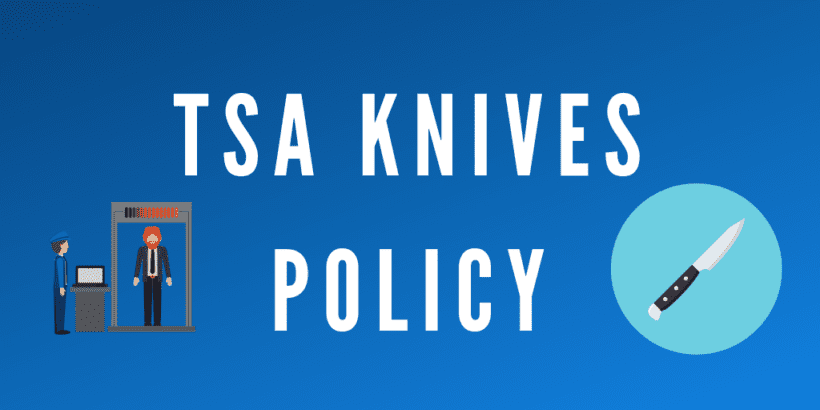
Sir i had 3 smal workknife holder in my caryon without blades, only holders.
Tsa would not let my go in the plane in mco airport yesterday.
No Sharp items at all.
Razer without blade was not a problem.
I am a Chef by trade and I am moving to the Philippines — I want to bring my chefs knives and other chefs items with me How can I accomplish this without losing them Through Theft